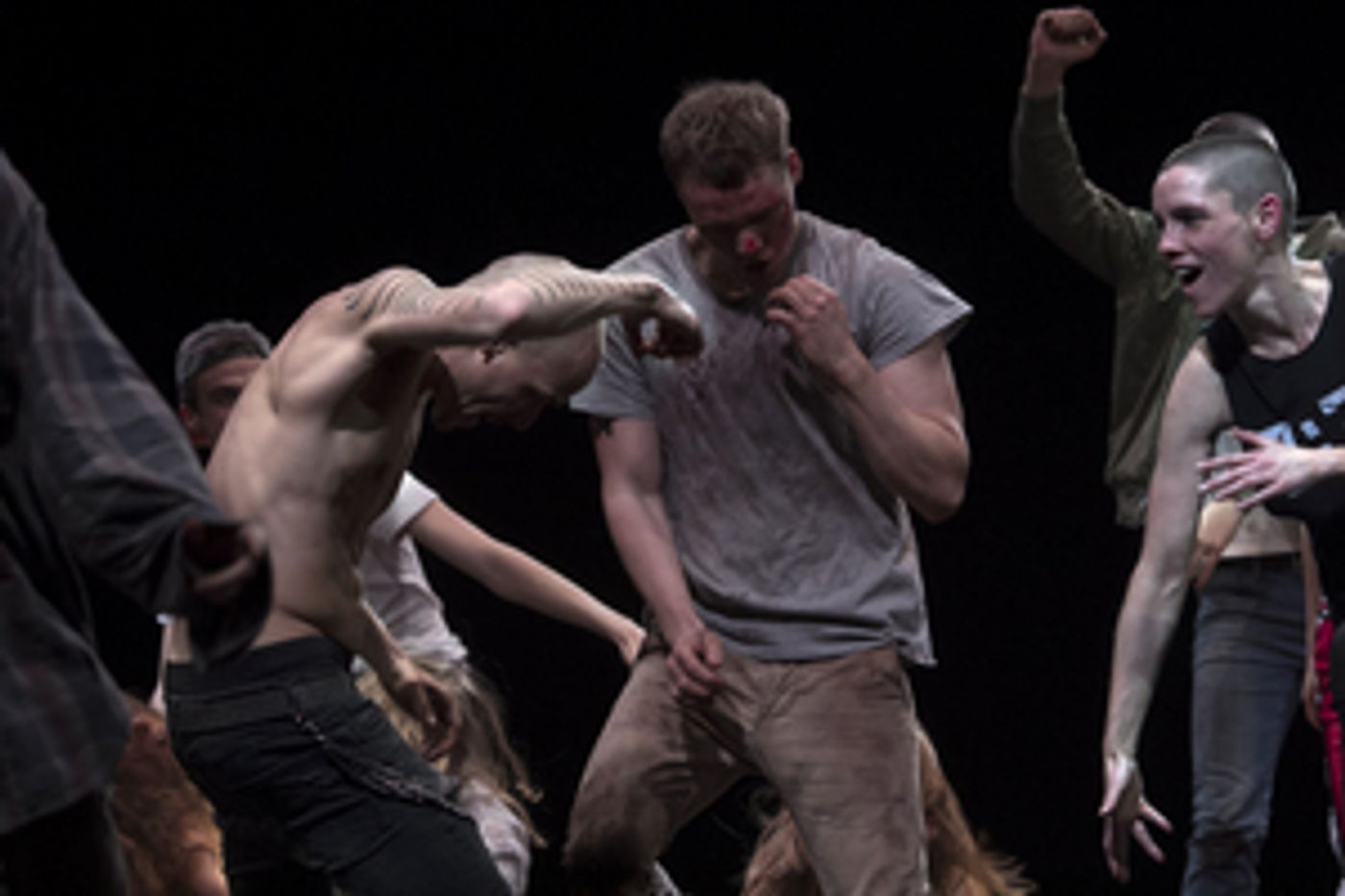Review: CROWD, Sadler's Wells

![]() Raves are often chaotic, messy, and inscrutable. Not so much in Gisèle Vienne's Crowd, which dissects the life cycle of a rave with transfixing precision and visceral clarity.
Raves are often chaotic, messy, and inscrutable. Not so much in Gisèle Vienne's Crowd, which dissects the life cycle of a rave with transfixing precision and visceral clarity.
Having premiered in Strasbourg in 2017, Crowd receives its first UK production at Sadler's Wells, where it opens this year's Dance Umbrella Festival. A continuous soundscape of early 90s techno-trance music provides an electrifying stimulus to 15 performers, who portray with admirable command the eponymous group of raving youth.
It all begins with a young woman emerging out of darkness and onto the soil that covers the entire stage, littered with plastic cups, broken bottles and discarded hoodies. She is soon joined by a motley crew of others - reuniting friends, solo creepers, hesitant newcomers.
As the beats intensify and alcohol spills over, constellations of violence and desire start to form among these strangers, regrouping them into different units, pushing them around the vast space. Their time together becomes a dizzying roller coaster that takes them to strange but liberating places, including deep into themselves.
Vienne's richly textured and cinematic choreography is characterised by slow-motion, viscous action. Her performers move, dance and interact with one another at a pace that draws attention to even their most fleeting gestures, making them refreshingly legible.
Things get more dynamic as Vienne introduces into this pattern certain ruptures: someone who starts moving during a total freeze, for instance, or two groups who differ slightly in their tempos. Such moments where divergent temporalities coexist shift the focus to the subjective nature of the rave experience, showing us what lies beneath the shiny surface of mass unity.
The cumulative effect of this rhythmic slowing down, and of its various alterations, is simply hypnotic. The combination of loud music and dense, painterly details soaks up the audience's attention nearly effortlessly: the experience of watching Crowd is akin to getting engrossed by a huge and crowded tableau vivant. Patrick Riou's highly contrasting lighting plays a major part in creating this effect. It is also fuelled by the seamless ways in which the performers vacillate between control and self-abandon, stasis and action.
For all their discrete personalities and storylines (dramaturgy by Vienne and Dennis Cooper), the dancers exhibit a remarkable consciousness of their collective identity. It's as though by merely coming to this space they have entered a communal contract-one that makes them attuned to each other's bodies and needs, particularly in moments of heightened stylisation. Yet they also know how to set themselves apart individually. Detaching from the group in an act of rebellion or luring someone into a dancefloor tryst are just some of the ways they exert their sense of self.
The performers' immense agility allows them to attain both precision and fluidity in their vast repertoire of motions. Their youthful energy veils and unveils itself with a mischievous charm that makes for a layered emotional landscape. Though the narrative subtext that governs the course of the evening remains obscure at times, it is still possible to glean the major trajectory of their journey. This highly charged trip begins at a place of hesitance and isolation, but finds itself destined for catharsis, intimacy, and perhaps even expiation.
As Vienne's direct but delicate portrayal shows, a rave may well be the crucible in which a crowd can both destroy and rebuild a world.
Crowd at Sadler's Wells until 9 October
Photo credit: Estelle Hanania
Reader Reviews
Videos

